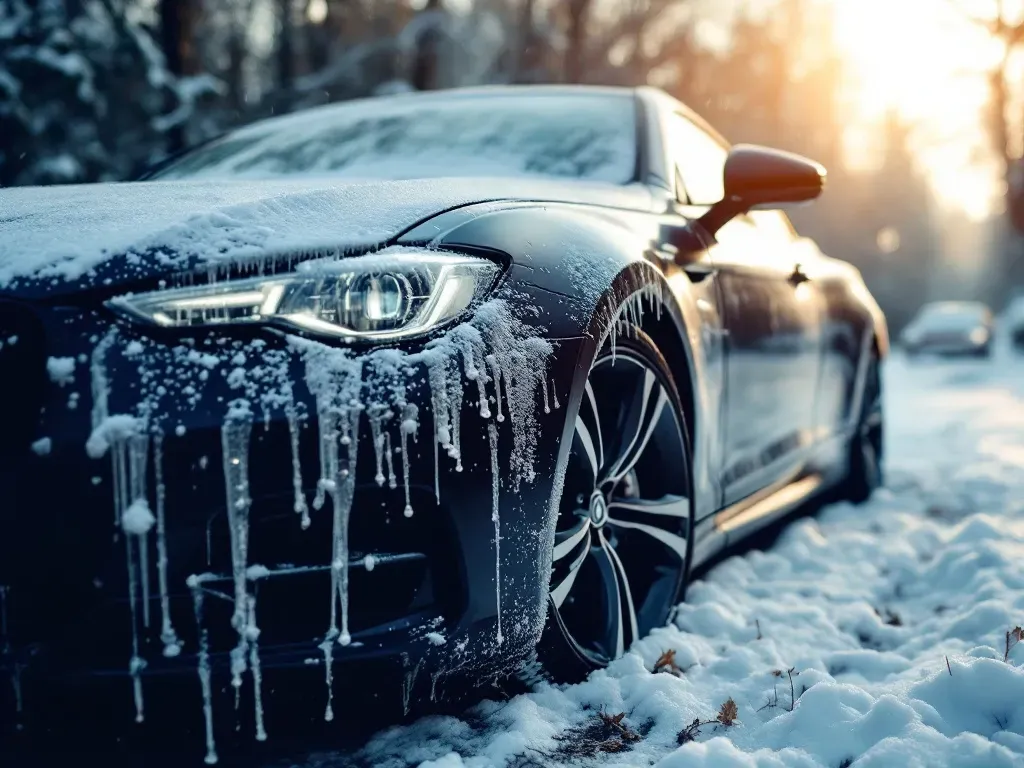
Winter Car Care Essentials That Will Save You Headaches
Winter Car Care Essentials That Will Save You Headaches
Ready to face Oregon City’s frost without scraping your windshield at dawn? Let’s lock in the winter car care essentials that dodge headaches, protect your ride, and keep you on the road.
Set your winter goals
Define clear targets to measure success through the season
Reduce cold-start failures by 50 percent
Maintain paint shine on salt-sprayed roads
Prevent windshield etching from ice and grit
Keep your interior warm and salt-free
Set a calendar reminder for November 1 to review your winter readiness.
Protect your paint
Winter salt attacks paint and clear coat. Shield your finish with a durable barrier.
When choosing a coating for your vehicle, consider both durability and protection level.
Carnauba wax gives your car a nice shine and helps water bead off, but it only lasts about 2 to 4 weeks. Synthetic sealants last longer around 2 to 6 months and offer better shine and protection, especially against road salt.
For long-term protection, ceramic coatings last between 1–2 years and offer the highest level of durability and environmental resistance.
Superior gloss and hydrophobic barrier (Vortex Detailing)
Apply before the first freeze and after highway trips.
Buff gently with a microfiber towel to clear salt residue.
Recoat every 4–6 weeks when roads stay icy.
Book a coating service or layer your own barrier this month.
Top off essential fluids
Cold weather strains fluid systems, so keep levels full
Coolant: replace every 30,000–50,000 miles or 3–5 years (Oil Changers)
Washer fluid: fill with freeze-resistant formula and swap wipers (Pellman's Auto)
Oil: consider winter-grade if recommended by your owner’s manual
Check levels weekly to avoid frozen blocks or overheating.
Schedule a service before the first deep freeze.
Check your battery
Winters below 0°F can halve battery capacity (Crown Battery)
Test resting voltage monthly, aim for 12.6 volts or higher
Inspect terminals for corrosion and tight connections
Replace batteries older than three years or showing weakness
Park inside when possible and unplug accessories overnight.
Test your battery voltage this week to ensure a robust start.
Inspect your tires
Snow tires give you traction on sleet and ice
Check tread and pressure
Measure tread depth monthly; swap to snow tires if depth falls below 6/32 inch
Monitor pressure at every fill-up; cold air drops about 1 PSI per 10 °F (Pellman's Auto)
Inflate winter tires 3–5 PSI above manufacturer spec to offset cooler running temps (Tire Rack)
Rotate tires as recommended to even out wear.
Check tire pressure today before you hit slick roads.
Stock an emergency kit
Build a winter kit that rescues you from roadside surprises
Warm blankets and extra clothes
Flashlight, flares, hazard triangles
Shovel, ice scraper, snow brush
Kitty litter or sand for traction
Jumper cables or portable battery charger
Nonperishable snacks and bottled water
First-aid kit and basic tools (Tires Plus)
Store your kit in the trunk or cargo area.
Assemble your emergency supplies by next weekend.
Plan professional detailing
Keep salt spray and slush from corroding hidden panels
Hire a mobile detailer for winter wash and sealant service
Undercarriage rinse to strip salt buildup
Ceramic coatings to lock out moisture
Interior deep clean to remove road grit
Glass treatment for clear visibility
Book your winter mobile detail by December 1 to lock in your slot.
As spring arrives, check our car detailing in spring guide for seasonal care.
Checkpoint table
Track your progress with clear metrics
To keep your vehicle in peak condition through the colder months, follow this maintenance routine with clear checkpoints.
Paint protection should be refreshed every 6 weeks to ensure the barrier remains intact. Fluid levels should be inspected weekly, with all reservoirs kept full.
Battery voltage should be tested monthly, aiming for 12.6 volts or higher at rest.
Tire pressure should be checked weekly, maintaining about 3–5 PSI above your normal winter spec.
Lastly, inspect your emergency kit monthly to confirm all essential items are stocked and ready.
Winter roads are tough — but your car doesn’t have to suffer for it. Let Vortex Detailing handle the protection. Book your winter detailing today and drive through the season with confidence.
Liked this blog? Check out our other seasonal car care guides to keep your ride looking its best year-round.
